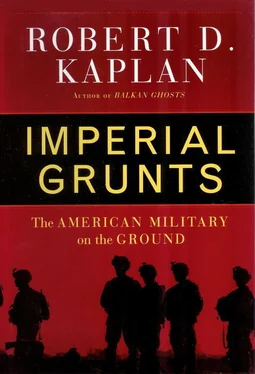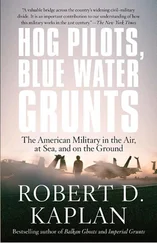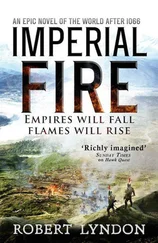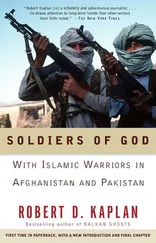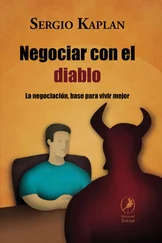“That’s why I joined SF,” Shachnow continued. “In Vietnam, when I commanded my own infantry battalion, there was someone to pitch my tent, blow up my air bag, make me coffee, and drive my jeep. If you’re the ego-trip sort of guy you like that. In SF you pitch your own tent and blow up your own air bag. I joined Special Forces because it forced me to think; it kept me from getting bored.”
———
Shachnow introduced me to the world of Army Special Forces, where I would start my odyssey with the American military. Later I would move on to other branches of the armed services, in no particular order, often shuttling back and forth. Comparison is the heart of all serious scholarship, and thus my keenest perceptions about SF would come only after many trips with non-SF units.
U.S. Army Special Forces traced their origins to the World War II–era Office of Strategic Services (OSS), specifically the Jedburgh teams who were dropped behind enemy lines in Nazi-occupied France, and Detachment 101, which operated in Burma. 3Jedburgh is an area of Scotland where local Scots had conducted guerrilla war against British invaders in the twelfth century. The Jedburgh concept meant placing small teams in hostile terrain, to train and organize much larger groups of guerrillas in unconventional warfare so that the teams became force multipliers. 4
The OSS, disbanded after World War II, gave birth to the Central Intelligence Agency (CIA) in 1947 and to the 10th Special Forces Group in 1952, based at Fort Bragg, which had responsibility for operating behind enemy lines in Europe in the event of war with the Warsaw Pact nations. President John F. Kennedy, whose respect for unconventional warfare dated to his experiences as a PT boat commander in the Pacific in World War II, expanded the role of Army Special Forces, particularly in Southeast Asia, and awarded them an official headgear, the green beret. 5But the term “Green Berets” is rarely used by Special Forces troops themselves. They prefer simply “SF.”
SF’s real signature was not sartorial but organizational: its emphasis on twelve-man teams.
In places like Yemen, the right men, men like Shachnow, had the best chance of finding the right hinge—the fragile axis upon which political developments in a given country can turn. The Spartans turned the tide of battle in Sicily by dispatching only a small mission, headed by Gylippus. His arrival in 414 B.C. kept Sparta’s allies, the Syracusans, from surrendering to the Athenians. It broke the Athenian land blockade of Syracuse, rallied other Sicilian city-states behind Syracuse, and was crucial to the defeat of the Athenian fleet the following year.
The notion that vast historical forces could be tipped by the right individuals exerting pressure in the right spot has always offered an attractive antidote to fatalism. As such, it was reprised by President Kennedy, who, in the second decade of the Cold War, believed that relatively small-scale unconventional, covert operations could be an alternative to massive nuclear retaliation. Kennedy also believed that the nature of war itself was changing. As he told the 1962 graduating class of West Point: “This is another type of war, new in its intensity, ancient in its origin—war by guerrillas, subversives, insurgents, assassins, war by ambush instead of by [conventional] combat…. It requires… a whole new kind of strategy, a wholly different kind of force, and therefore a new and wholly different kind of military training.” 6
Kennedy could have been describing the world of the early twenty-first century. Though his vision of unconventional war was to bear mixed results in Vietnam, his larger analysis would prove clairvoyant. [10] See Richard H. Shultz Jr.’s The Secret War Against Hanoi: The Untold Story of Spies, Saboteurs, and Covert Warriors in North Vietnam (New York: HarperCollins, 1999) (footnote 6) for a lucid analysis of the problems of unconventional war in Vietnam, and of Kennedy’s attraction to it.
———
Special Forces was particularly active in Colombia, the country that Coast Guard Capt. Bob Innes in Yemen had described to me in grisly detail. Thus Colombia was where I wanted to go. It was the third biggest recipient of U.S. foreign aid after Israel and Egypt. American interests there were hard to overestimate.
Colombia is the third most populous country in Latin America after Brazil and Mexico, and half as close to the United States as Europe. It has
vast untapped oil reserves; America was already getting more oil from this region of South America than from the Arab world. Colombian narco-terrorists had forged strategic links with radical Islamists: proof that while the frontier of Indian Country used to begin eight miles west of Fort Leavenworth—where the Santa Fe and Oregon trails separated—it now circumscribed the earth, and was not confined to the Middle East.
While the world’s last totalitarian, Cold War regimes in Iraq and North Korea were grabbing headlines that winter, the future of military conflict was better gauged in Colombia, which represented a severer form of social breakdown than Yemen or almost anyplace else in the Middle East. The effort in Iraq, with its large-scale mobilization of troops and immense concentration of risk, could not be indicative of how the U.S. would act in the future. It was in Colombia where I was introduced to the tactics that the U.S. would employ to manage an unruly world.
Colombian guerrilla groups had forsaken controlling twentieth-century ideologies in favor of decentralized baronies and franchises, built on terrorism, narco-trafficking, kidnapping, counterfeiting, and extortion of oil pipeline revenues from local governments. With hundreds of millions of dollars annually from cocaine-related profits, and with documented links to the Irish Republican Army and the Basque separatists—who advised them on kidnapping and car bomb tactics—the Colombian guerrillas were an exotic variant of al-Qaeda, in the sense that they had no stake in any legitimate world order.
While Yemen boasted the largest per capita number of small arms in the world, Colombia led the world in kidnapping: three thousand in 2002 alone. Colombia produced 80 percent of the world’s cocaine. More so than Yemen, Colombia was less a country than a series of fortified city-states, perched eight thousand feet up in the Andean Cordilleras, surrounded by ungovernable, fast-buck tropical lowlands. In those sweaty forest tracts, loyalty to the elected government in Bogotá was, as one Army officer at Fort Bragg told me, “about twentieth on the inhabitants’ list of priorities.”
Even as U.S. leaders denied that America had imperial intentions, Colombia—so remote from public consciousness, and yet the recipient of so much American aid—illustrated the imperial reality of America’s global situation. In Colombia, cocaine armies had constituted an intractable insurgency long before al-Qaeda did. To better understand the so-called War on Terrorism, it was worth beginning with the so-called War on Drugs.
———
Thus, I flew to Miami, the headquarters of U.S. Southern Command.
SOUTHCOM traced its origins to 1903, when the first U.S. Marines arrived in Panama to protect a railroad connecting the Atlantic and Pacific oceans. It had responsibility for Central and South America, and the Caribbean. [11] Mexico is covered by Northern Command.
Only in 1997 did SOUTHCOM move its headquarters from the outskirts of Panama City to Miami. The many decades in Panama, the large number of Latinos in the U.S. military, and the fact that so many non-Latino troops in SOUTHCOM spoke Spanish made it the most insular, old-fashioned, and colonial of all the area commands.
The flags flying at the Miami headquarters called to mind the Spanish-American War of 1898 and lesser, constabulary escapades south of the border. The ethnic Cubans, Puerto Ricans, Dominicans, and Mexicans in SOUTHCOM’s ranks were the American equivalent of the field-savvy Hindustani- and Pushto-speaking Anglo-Indians who had served Britain’s Indian army so well. Officers and enlisted men spent entire careers in SOUTHCOM, to a degree uncommon in other theaters, moving from El Salvador to Honduras, then to Panama, to Peru, Ecuador, Colombia, and so on: “the cucaracha circuit,” as it was affectionately known. The battalion coins for the Army’s 7th Special Forces Group, the group assigned to Latin America, were engraved in Spanish rather than in English: “Fuerzas Especiales” rather than “Special Forces.” Seventh Group was the only SF group that approximated the standards of the original 10th Group in terms of linguistic and area expertise. 7
Читать дальше
